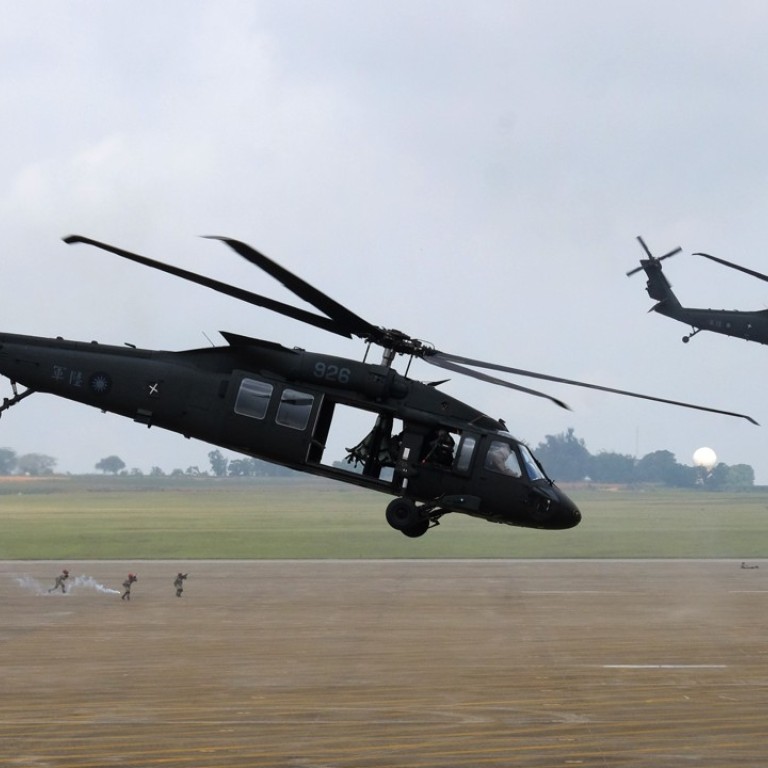
Taiwan’s military exercise sends three loud and clear messages – to China, the US and its own people
Michal Thim says given that military force might be China’s only option in its pursuit of Taiwan, the island’s recent Han Kuang exercise signals its battle readiness
However, whether any of that will directly affect the stance of either Taiwan’s government or its population remains doubtful. The Taiwanese public will learn to live with these measures as their impact on Taiwan’s capability to continue to function as a de facto independent state is limited at best.
It is precisely the limited success of non-military coercive measures and political incentives that increasingly narrow Beijing’s options in its desire to annex Taiwan into the People’s Republic, making military force not the last but the only available resort.
Watch: PLA air force conducts training flights around Taiwan
The decision-makers in Taipei are well aware of this predicament. If Taiwan won’t give in to political and economic pressure, the deployment of force by Beijing becomes more likely. To that end, the Han Kuang exercise, and other smaller, less-publicised drills, openly address the most severe challenges that Taiwan’s defence would face.
The message to Beijing is that … the PLA underestimates Taiwan’s capability and will to fight at its peril
The theme of the 2018 Han Kuang drill is a focus on joint air-sea combat operations that would play a crucial role in repelling the primary force that the PLA would send to take Taiwan. However, more important are anti-landing drills in the Tamsui area north of Taipei and the anti-airborne exercise that simulated an attack on Taiwan’s largest air force base in Taichung. This year’s innovative element is including civilian assets, such as telecommunications company Chunghwa Telecom, in the exercise.
Staging a countrywide military exercise is as much about practical matters as it is about messaging.
First, the message to Beijing is that, for all the might that its military has accumulated since the 1990s, the PLA underestimates Taiwan’s capability and will to fight at its peril.
Watch: Beijing says Taiwan independence is doomed to failure
Invasion of Taiwan would require effort on the scale seen on June 6, 1944. The advancement in precision-guided ammunition, Taiwan’s mountainous terrain and the low number of beaches suitable for such an assault give defenders an immense advantage. Thus, Beijing’s preferred option would be a decapitation strike: a surprise deployment of a smaller force after which Taiwan’s government is either captured or promptly surrenders.
The drill in Tamsui sends a clear signal that defending Taipei and Taiwan’s government is a priority
Long aware of this, some of the Taiwanese military’s best soldiers, including the marines and military police, are pre-positioned to protect Taipei and the government. The drill in Tamsui sends a clear signal that defending Taipei and Taiwan’s government is a priority.
The exercise’s second message is for Washington. The US commitment to defend Taiwan is contingent on Taiwan’s capability to successfully fight alone in the early stage of the conflict. US intervention could take weeks, depending on the nature of early warning signs. This shows the US that Taiwan is prepared for various scenarios.
Watch: Taiwan keen to boost domestic defence industry
However, it is also true that a military career is looked down on by many people. Military drills alone cannot address this. Taiwan’s defence ministry and the military need to engage regularly with the public to improve the image of the armed forces. Nevertheless, the Han Kuang drill shows the public the state of preparations for a worst-case scenario. Involvement of civilian elements in the exercise is a positive step.
Military exercises have always been a routine element of the cross-strait conundrum. However, they deserve attention in a changing strategic environment that makes military conflict more likely.
Michal Thim is a Taiwan analyst at the Association for International Affairs (Czech Republic) and a fellow of the Metropolitan Society for International Affairs (US)

